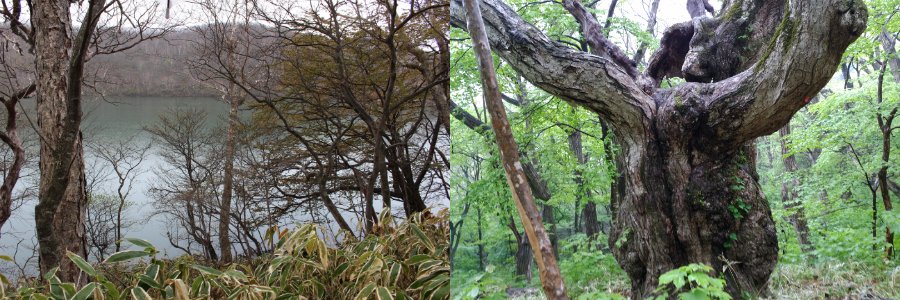A forest of Mizunara oaks stretches along the shore of a highland lake.
Sunlight reflects on the surface, shimmering with shades of vivid green.
The breeze stirs ripples across the water, casting flickers of light back onto the leaves.
From the depths of the still lake rises a silent, unwavering will.
A flash of green galbanum cuts through the air, crisp and vibrant.
It gives way to a flowing herbal accord, gradually layered with a sharp, woody middle note.
The base is a malt core―full-bodied and warm―anchored by kyara and sandalwood, rounded with the charred sweetness of labdanum and a subtle dry smokiness.
Metallic amber adds a final touch of firmness and complexity to this deeply nuanced scent.
| Type | Green Oriental |
|---|---|
| Top Notes | galbanum ess., rosemary, clary sage, lavender, cognac oil |
| Middle Notes | juniper, cypress, patchouli |
| Last Notes | chamomile blue, ciste abs., labdanum res, tolu balsam res. |

Japanese oak, known as mizunara (Quercus crispula Blume), is a deciduous tree native to Japan’s beech forests, where it grows alongside the native buna (Japanese beech). It is thought to have evolved from the Mongolian oak (Quercus mongolica) and is sometimes referred to as "Japanese oak" in English. With lifespans that can exceed 1,000 years, mizunara trees are remarkable for their longevity and resilience.
Even when felled, mizunara has a strong regenerative ability, producing new shoots from its base. Despite its age, it often remains modest in size, as it channels much of its energy into developing a deep and robust root system rather than expanding its branches.
The wood is dense, heavy, and finely grained, making it ideal for architecture and fine furniture. In the forest, mizunara supports a rich ecosystem―most famously cultivating maitake mushrooms and many other fungi. It is truly a tree of quiet strength and generous spirit, revered in both nature and craftsmanship.
